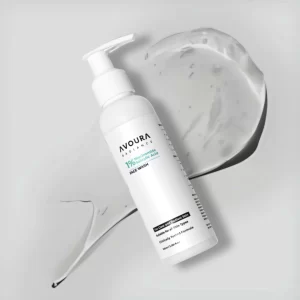In recent years, the conversation around female wellness and autonomy has expanded to include a range of procedures that were once rarely discussed. Among these, labiaplasty has emerged as a topic of increasing interest. By 2025, evolving medical techniques, shifting societal attitudes, and improved patient outcomes have brought this once-taboo surgery into the mainstream. While cosmetic procedures have long been associated with aesthetic desires, labiaplasty uniquely intersects health, comfort, and personal choice. Whether driven by physical discomfort or emotional well-being, the decision to undergo this procedure is deeply personal. Many women consider it as a form of labial reduction to enhance their quality of life, improve confidence, or alleviate discomfort.
What Is Labiaplasty and Why Do Women Consider It?
Labiaplasty is a surgical procedure that reshapes or reduces the labia minora — the inner “lips” of the vulva. In some cases, the labia majora (outer lips) may also be addressed. Though often categorized under cosmetic surgery, labiaplasty is more than a pursuit of beauty. Women seek this surgery for a variety of reasons: to reduce physical irritation during activities like cycling or intercourse, to manage hygiene challenges, or to feel more confident in swimwear or tight clothing.
The shape and size of the labia can vary greatly among women. Genetics, aging, childbirth, and hormonal shifts can all influence their appearance. For some, these natural variations result in discomfort or distress. Labiaplasty provides a solution by customizing the vulva’s appearance while improving physical well-being. With improved techniques in 2025, procedures are more precise, less invasive, and come with a quicker recovery timeline than in previous years.
The Rise of Labiaplasty in the Era of Body Autonomy
A decade ago, conversations about genital aesthetics were limited, often stigmatized or ignored altogether. But as public awareness of body autonomy and women’s health has grown, so has the acceptance of labiaplasty. Empowered by social media, health blogs, and candid testimonials, more women are openly discussing their bodies and making informed choices about procedures that enhance their comfort and confidence.
In 2025, the stigma surrounding female genital cosmetic surgery has notably diminished. Women are no longer forced to justify their choices as purely cosmetic. Instead, labiaplasty is increasingly viewed through the lens of self-care and body autonomy — much like breast reduction or corrective jaw surgery. The decision isn’t about conforming to a standard, but rather reclaiming control over one’s own physical and emotional comfort.
What to Expect From the Procedure and Recovery
Modern labiaplasty techniques in 2025 prioritize patient safety and comfort. Most procedures are outpatient and typically performed under local anesthesia with sedation, though general anesthesia is also an option depending on patient preference and the complexity of the surgery.
There are several surgical approaches to labiaplasty. The two most common are the trim method (where excess labial tissue is trimmed and sutured) and the wedge method (where a pie-shaped section is removed to preserve the natural labial edge). Advances in laser-assisted surgery and radiofrequency have also improved precision and minimized bleeding.
Recovery is typically straightforward. Swelling and mild discomfort are common for the first few days. Most women return to work or daily routines within 5–7 days, though strenuous activities and sexual intercourse are usually postponed for 4–6 weeks. Surgeons now use dissolvable sutures and refined techniques that reduce scarring and optimize healing.
Post-operative care includes hygiene routines, avoiding tight clothing, and attending follow-up appointments. When performed by a board-certified and experienced surgeon, labiaplasty boasts a high satisfaction rate with minimal complications.
Addressing the Emotional and Psychological Impact
The benefits of labiaplasty extend beyond the physical. For many women, the psychological relief of resolving a long-standing source of discomfort can be transformative. In 2025, mental health support is increasingly integrated into pre- and post-surgical care, acknowledging the holistic impact of such decisions.
Patients often report improved body image, increased confidence, and reduced anxiety, especially when wearing fitted clothing or engaging in intimate relationships. However, it’s vital to approach labiaplasty with realistic expectations. While the procedure can be empowering, it’s not a cure-all for deeper insecurities. Consulting with a qualified surgeon who takes the time to understand your motivations is critical to achieving satisfying outcomes.
Mental health professionals may also be part of the consultation process, especially if a woman is considering the procedure in response to partner pressure or body dysmorphia. This collaborative approach ensures that each woman makes the choice for herself — with support, clarity, and confidence.
What to Consider Before Choosing Labiaplasty
As interest in labiaplasty grows, so does the number of providers offering the procedure. However, not all are equally qualified. In 2025, it’s crucial to choose a board-certified plastic surgeon or gynecologist with specialized training in female genital aesthetics. Look for someone who provides a comprehensive consultation, respects your goals, and shows you before-and-after photos of previous work.
Women should also be aware of the natural diversity in vulva appearance. What is labeled as “normal” or “ideal” is often influenced by filtered media and adult content. Trusted medical professionals will help distinguish between aesthetic desire and functional need, offering education rather than judgment.
Cost is another consideration. Labiaplasty is often not covered by insurance unless it’s deemed medically necessary. The average cost in 2025 ranges from $3,000 to $6,000 depending on location, surgeon experience, and the complexity of the procedure.
Finally, consider your reasons. If you’re driven by discomfort, functional issues, or a long-standing desire to feel more confident in your own body, labiaplasty may be the right choice. If your motivation is external pressure or comparison, a deeper conversation — possibly with a therapist — could help clarify your goals.
Conclusion
Labiaplasty in 2025 stands at the intersection of medical advancement, body autonomy, and personal empowerment. No longer shrouded in silence or shame, the procedure is now part of a broader movement that honors women’s choices about their bodies. With the right information, a skilled surgeon, and the support of thoughtful consultation, labiaplasty can be a deeply affirming decision for many women. Whether you’re exploring it for physical relief or emotional confidence, what matters most is that it’s your choice — informed, intentional, and entirely yours.






